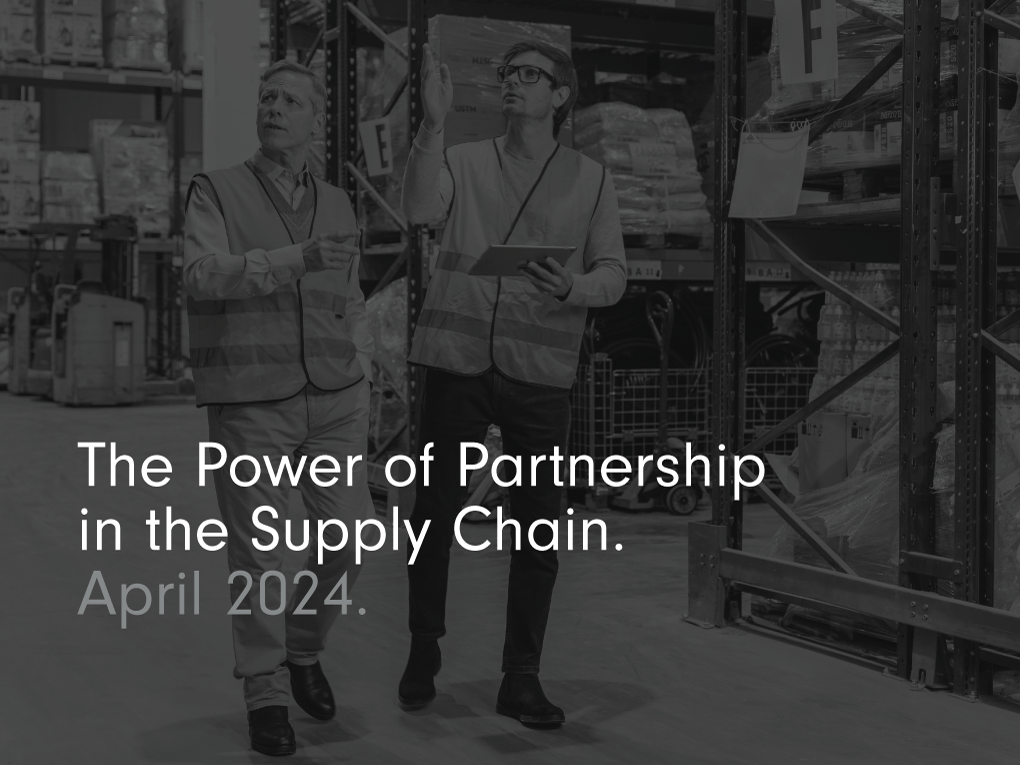Collaborative Logistics: The Power of Partnership in the Supply Chain.

The traditional ‘linear’ supply chain models are a thing of the past. In the rapidly evolving landscape of global commerce, a new standard is emerging—one that hinges on collaboration, not just within organisations, but across the entire logistics ecosystem.
Welcome to the era of collaborative logistics—a dynamic approach revolutionising how we move goods from production lines to store shelves. This article is designed to provide unique insights into how collaborative logistics can redefine efficiency, cut costs, and foster innovation within the supply chain.
Disrupting the Supply Chain Status Quo.

It’s no secret that supply chains are becoming increasingly complex, with goods crossing the globe through a complex web of vendors, carriers, and distributors. Yet, siloed operations and rigid structures often lead to inefficiencies, delayed response times, and unnecessary costs. The call for transformation is loud, and the answer seems clear: collaboration.
Experts from Wharton have described the evolution of collaboration dynamics as transitioning from a “unitary executive” tradition to a more inclusive “market- or network-inspired cooperative model.” This shift resonates with the principles of open systems theory in management. Not only does it break down internal barriers, but also broadens the scope of collaboration to include partners and stakeholders who play crucial roles in the chain. The underlying concept is simple: by sharing knowledge and resources, all involved parties stand to benefit.
Collaborative logistics is a strategic response to the limitations of traditional models. By fostering deeper relationships and sharing information, partners can better align their efforts to meet demand, reduce waste, and stay agile in the face of market changes.
From Theory to Practice: The Collaborative Advantage.

Organisations have started to reap the benefits of a collaborative approach. Nestlé’s initiative to develop an open blockchain platform, IBM’s Food Trust, is a prime example. It allows all participants in the food supply chain to share information in real time, creating a trusted audit trail that can significantly improve food safety and quality control. Such initiatives demonstrate the power of partnerships in driving traceability and transparency, two fundamental aspects of successful logistics operations.
Another success story comes from the automotive industry, where Toyota streamlined its production processes by collaborating closely with its suppliers. This enabled the automaker to implement just-in-time inventory management, significantly reducing inventory carrying costs and minimising waste.
Collaboration inherently speeds up the flow of goods through the supply chain, as partners make joint decisions, enable quicker responses to customer demand, and integrate their planning processes. This edge in agility is increasingly critical in today’s on-demand consumer market.
Technology as the Enabler of Collaboration.

The fuel that powers collaborative logistics is technology. TMS (Transportation Management System), WMS (Warehouse Management System), ERP (Enterprise Resource Planning), and AMRs (Autonomous Mobile Robots) are just the tip of the digital transformation iceberg. IoT (Internet of Things), big data analytics, AI, and machine learning provide visibility into every step of the supply chain, enabling partners to make smarter, data-driven decisions in real-time.
For the collaborative logistics model to succeed, all systems must have seamless communication and operate efficiently. This requires partners to ensure robust integrations and foster open channels of communication between various providers and platforms. Modern supply chains are complicated. Information needs to flow freely and securely between the various systems.
Implementing API technology can be a game-changer, enabling different software systems to communicate in real-time and share vital data without intervention. Partners that prioritise creating a connected ecosystem greatly enhance their operational responsiveness and flexibility. This thereby amplifies the overall efficiency and resilience of the supply chain. This strategic alignment optimises day-to-day operations and strengthens the capacity to manage disruptions and adapt to market dynamics swiftly.
Overcoming the Collaboration Conundrum.

While the benefits of collaborative logistics are clear, the path to achieving true collaboration is fraught with challenges. One of the most significant hurdles is building trust among partners—a process that takes time and effort. There are also concerns about information sharing, with companies being cautious about revealing too much to their competitors.
Infrastructure is another critical factor. Physical and digital infrastructure must be in place to support collaboration. Without these foundations, even the most willing partners can find themselves unable to cooperate effectively.
Navigating the Future of Logistics Collaboration.

The future of collaborative logistics is undeniably bright. We can expect to see more robust partnerships and deeper integration across the supply chain as companies recognise the potential. Collaboration will drive operational efficiency and also spark new avenues for product innovation and service excellence.
Sustainability is also a significant driver of collaborative logistics. By working together, partners can reduce the environmental impact of their operations.
To capitalise on the promise of collaborative logistics, companies must act now. They need to invest in building strong partnerships and the technology that will enable these collaborations. Beyond this, it’s crucial to create a culture that values and promotes cooperation, setting the stage for a truly integrated supply chain.
The Future is Collaborative.

Collaborative logistics represents an exciting prospect for the industry, one that promises not just incremental improvement, but a fundamental shift in the way we think about the supply chain. With the right mindset, strategies, and technologies, the power of partnership can elevate logistics into a core competitive advantage.
For businesses looking to future-proof their supply chain management, the message is clear: Invest in partnerships and technology. The collaborative era has begun, and those who seize its potential will lead the way in the logistics of tomorrow.
Balloon One’s overarching goal for collaborative logistics is to serve as a comprehensive partner for all supply chain systems, ensuring seamless collaboration across various platforms and entities. By positioning ourselves as the central hub, we aim to facilitate a holistic and interconnected supply chain, where information flows freely and decisions are made with a complete, unified view.
Through strategic partnerships and a focus on innovation, Balloon One is not just participating in the supply chain; we are working to redefine it, making collaborative logistics a reality.